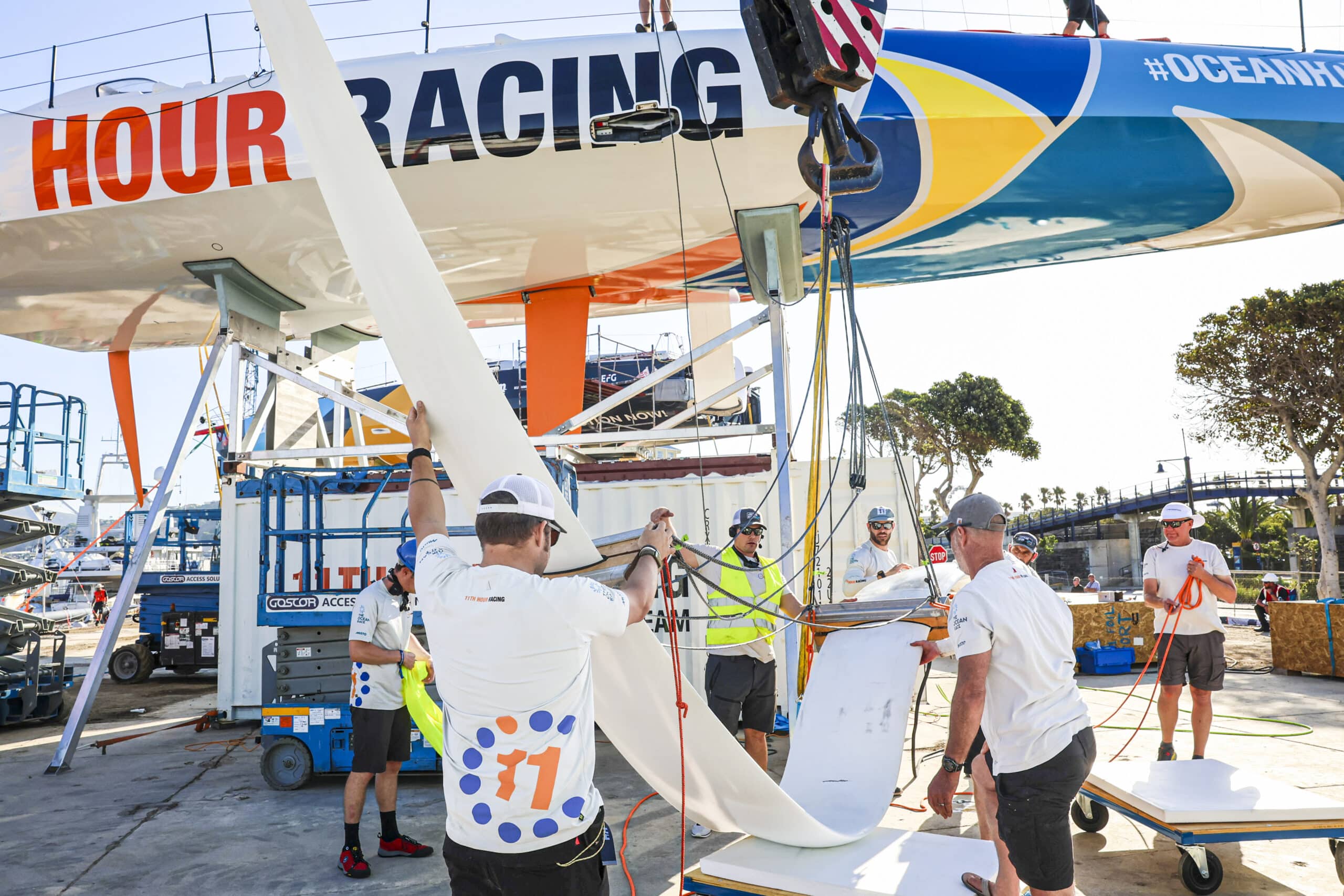UPDATED FEB 17: SERIOUS DAMAGE FOUND TO 11TH HOUR RACING TEAM’S FOILS: REQUEST TO REPLACE FOR NEXT LEG APPROVED
UPDATE, Friday, February 17, 2023 1215 UTC:
11th Hour Racing Team’s request to replace its foils in Cape Town due to serious damage sustained in the first two legs of The Ocean Race has been approved by the Race Committee.
Mark Towill, 11th Hour Racing Team CEO commented, “We are pleased with the Race Committee’s decision to allow us to replace the damaged foils, which will allow us to continue in the next Leg in a safe and seamanlike manner. We will continue to work with our design and engineering teams on a repair plan, and look forward to getting Mālama back in the water, and back to racing next week.”
ThursdAy, February 16, 2023 1000 UTC:
Three days after arriving in Cape Town having completed Leg 2 of The Ocean Race 2022-23, 11th Hour Racing Team has discovered that both foils on its 60-foot race boat have suffered serious damage.
Following the team’s arrival in Cape Town on Sunday, February 12, all five boats in the race were lifted out of the water for checks and refit work before the fleet sets off for Brazil on February 26, 2023.
Once on the ground, the foils on Mālama were removed from the boat and have undergone surface Non-Destructive Testing. These non-invasive techniques determine the integrity of the structure of a boat and its appendages, and can be used to discover issues without causing any damage to the structure.
The survey found serious damage to both foils, and after consultation with the yacht’s design team, the advice given is that the foils will require extensive repair before going back into service. This work cannot be completed onsite in Cape Town before the boats leave on Sunday, February 26, for Leg 3 of The Ocean Race.
The consensus is it would be unsafe to venture further in the race with this set of foils, particularly with the next leg being a five-week-long marathon through the Southern Ocean.
The team has formally requested permission from the Race Committee to replace the foils onboard Mālama, so they can continue to compete in a safe and seaworthy manner.
The foils will be returned to the manufacturer in Europe where the full extent of the damage will be assessed before undergoing the necessary repairs, anticipated to take a number of weeks.
The state-of-the-art yacht has sensors on key components to measure loads and to provide real-time data back to the team’s shore crew, both to analyze performance, but more importantly to continuously check the safety of the vessel.
The first signs of damage were noticed in the final hours of Leg 1, when the team was on the approach to Cabo Verde. In around 22 knots of wind [25mph/40kmph] the alarms attached to the foils were set off indicating a spike in the loads, and on inspection, it was clear there were multiple transverse cracks visible on the port foil.
On arrival in Cabo Verde, both foils were inspected, and the same transverse cracks were also visible on the starboard foil.
Skipper, Charlie Enright said, “The stopover in Cabo Verde was determined to be a ‘Short Stop’ – so only the five people who arrived on the boat could work on it – our shore crew could only stand on the sidelines and advise. We surveyed the foils from the water and explored a few of the small cracks by sanding off the paint. No damage to the carbon was evident at that time, and there were a lot of discussions and late-night calls back to the design team to consider all our options. Between us we agreed that we had to get the boat safely to Cape Town where we knew we could bring the experts in to inspect further. So we proceeded with racing, yet with some caution.
“To head into the Southern Ocean for nearly a month with two damaged foils would be foolhardy and not a risk that I am prepared to take, not for the safety of my crew, of the boat, nor for our competitors, who ultimately are our safety net down there. I trust my design team and their recommendation. It’s disappointing, but the right decision to make,” concluded Enright.




